from bs4 import BeautifulSoup #创建 Beautiful Soup 对象 # 使用lxml来进行解析 soup = BeautifulSoup(html,"lxml") print(soup.prettify())
返回结果

就是 HTML 中的一个个标签
在上面范例的基础上添加
from bs4 import BeautifulSoup #创建 Beautiful Soup 对象 # 使用lxml来进行解析 soup = BeautifulSoup(html,"lxml") #print(soup.prettify()) #创建 Beautiful Soup 对象 soup = BeautifulSoup(html,'lxml') print (soup.title)#None因为这里没有tiele标签所以返回none print (soup.head)#None因为这里没有head标签所以返回none print (soup.a)#返回 <a class="fill-dec" href="//my.csdn.net" target="_blank">编辑自我介绍,让更多人了解你<span class="write-icon"></span></a> print (type(soup.p))#返回 <class 'bs4.element.Tag'> print( soup.p)
其中print( soup.p)
返回结果为
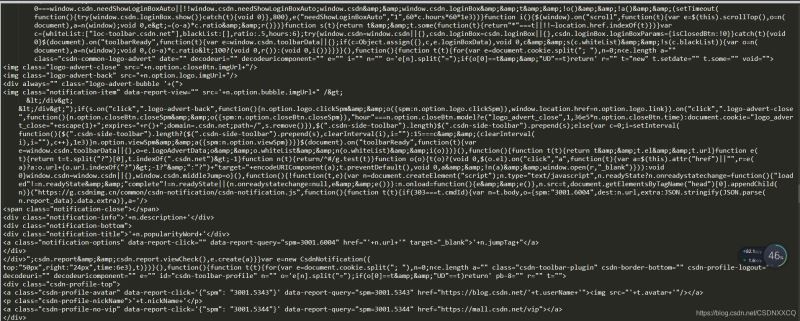
同样地,在上面地基础上添加
print (soup.name)# [document] #soup 对象本身比较特殊,它的 name 即为 [document]
返回

print (soup.head.name)#head #对于其他内部标签,输出的值为标签本身的名称
print (soup.p.attrs)##把p标签的所有属性打印出来,得到的类型是一个字典。
返回
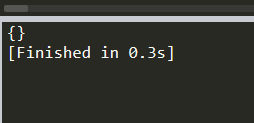
print (soup.p['class'])#获取P标签下地class标签
soup.p['class'] = "newClass" print (soup.p) # 可以对这些属性和内容等等进行修改
返回
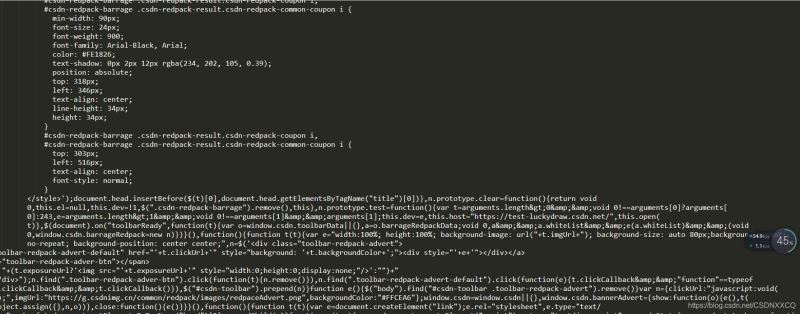
前面地基础上添加
print (soup.p.string) # The Dormouse's story print (type(soup.p.string)) # <class 'bs4.element.NavigableString'>thon
返回结果
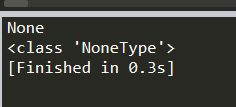
beautiful soup对象表示文档的全部内容。大多数情况下,它可以被视为标记对象。它支持遍历文档树并搜索文档树中描述的大多数方法因为Beauty soup对象不是真正的HTML或XML标记,所以它没有名称和属性。但是,有时查看其内容很方便。Name属性,因此美丽的汤对象包含一个特殊属性。值为“[文档]”的名称
print(soup.name) #返回 '[document]'
用于解释注释部分的内容
markup = "<b><!--Hey, buddy. Want to buy a used parser?--></b>" soup = BeautifulSoup(markup) comment = soup.b.string type(comment) # <class 'bs4.element.Comment'>
在上面的基础上添加
head_tag = soup.div # 返回所有子节点的列表 print(head_tag.contents)
返回
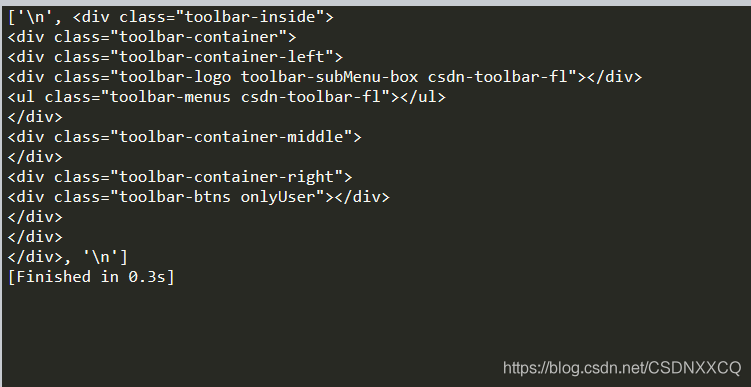
同理
head_tag = soup.div
# 返回所有子节点的迭代器
for child in head_tag.children:
print(child)
返回
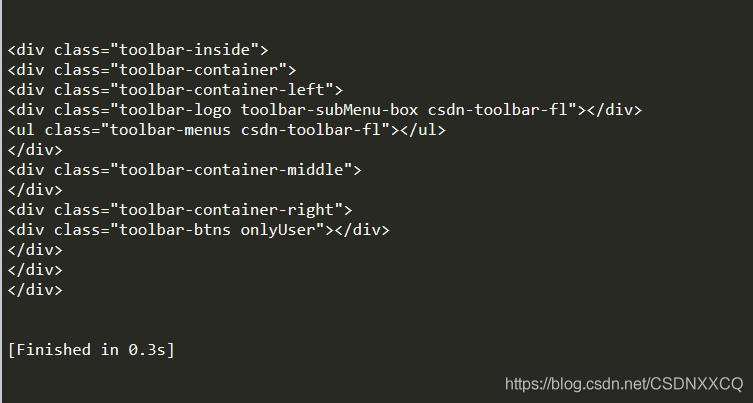
可用 .strings 来循环获取
for string in soup.strings:
print(repr(string))
返回
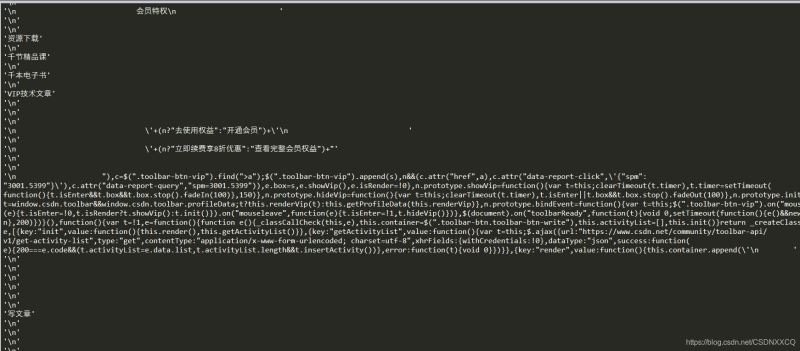
for string in soup.stripped_strings:
print(repr(string))
返回
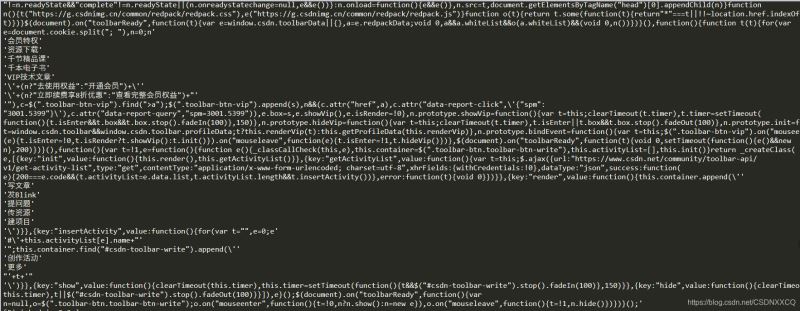
找到所有
print(soup.find_all("a",id='link2'))
find方法是找到第一个满足条件的标签后立即返回,返回一个元素。find_all方法是把所有满足条件的标签都选到,然后返回。
#通过标签名查找:
print(soup.select('a'))
#通过类名查找:
#通过类名,则应该在类的前面加一个'.'
print(soup.select('.sister'))
#通过id查找:
#通过id查找,应该在id的名字前面加一个#号
print(soup.select("#link1"))
查找a标签返回的结果

其他因为网页本身没有,返回的是一个空列表
组合查找
print(soup.select("p #link1"))#查找 p 标签中,id 等于 link1的内容
子标签查找
print(soup.select("head > title"))
通过属性查找
print(soup.select('a[href="http://example.com/elsie"]'))#属性与标签属同一节点,中间不能有空格
先查看类型
print (type(soup.select('div')))

for title in soup.select('div'):
print (title.get_text())
返回
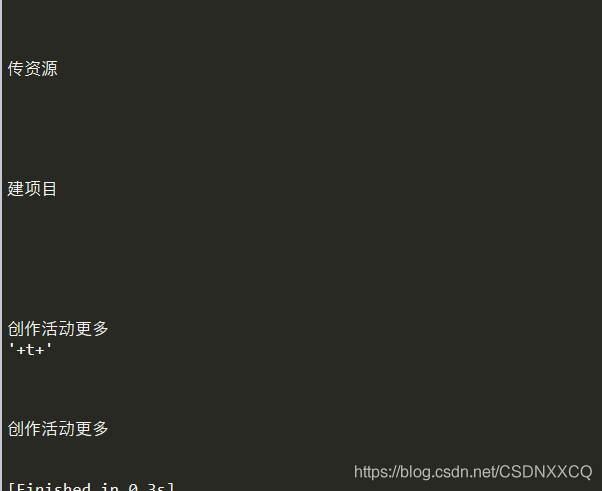
print (soup.select('div')[20].get_text())#选取第20个div标签的内容
返回
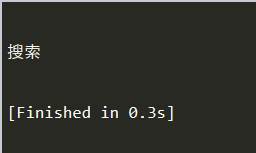
本篇文章就到这里了,希望能给你带来帮助,也希望您能够多多关注的更多内容!